PACCAR PX-9 Operator's Manual
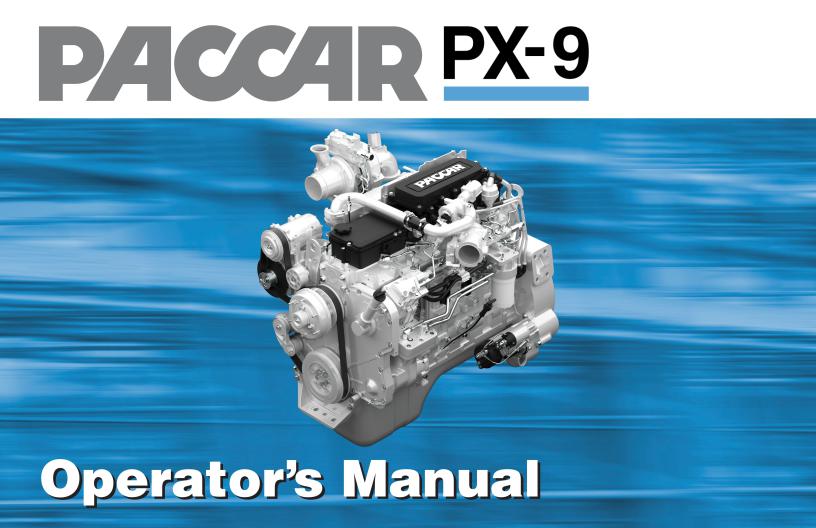
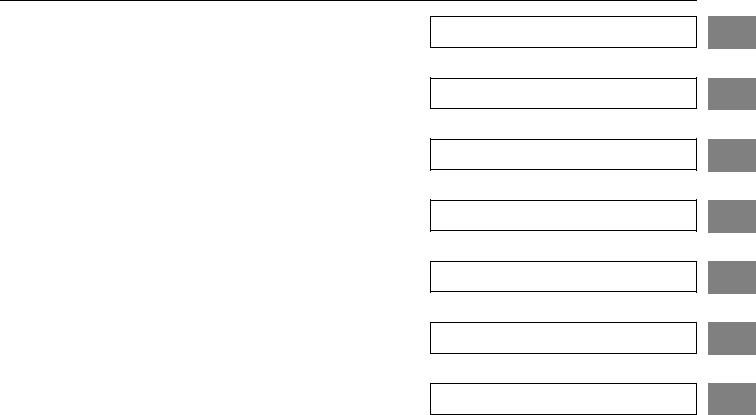
Contents
Safety
Emergency
Controls
Driving
Maintenance
Information
1
2
3
4
5
6
Index 7

Contents
©2012 Paccar Inc - All Rights Reserved
This manual illustrates and describes the operation of features or equipment which may be either standard or optional on this vehicle. This manual may also include a description of features and equipment which are no longer available or were not ordered on this vehicle. Please disregard any illustrations or descriptions relating to features or equipment which are not on this vehicle.
PACCAR reserves the right to discontinue, change specifications, or change the design of its vehicles at any time without notice and without incurring any obligation.
The information contained in this manual is proprietary to PACCAR. Reproduction, in whole or in part, by any means is strictly prohibited without prior written authorization from PACCAR Inc.

SAFETY
INTRODUCTION |
|
1 |
|
|
|
Safety Alerts . . . . . . . . . . . . . . . . . . |
1-3 |
|
Illustrations. . . . . . . . . . . . . . . . . . . |
1-5 |
|
Foreword . . . . . . . . . . . . . . . . . . . |
1-6 |
|
Important Reference Numbers . . . . . . . . . . |
1-7 |
|
General Safety Instructions. . . . . . . . . . . . |
1-8 |
|
Acronyms and Abbreviations . . . . . . . . . . |
1-11 |
|
Unique Operating Characteristics of an Engine with |
|
|
On-Board Diagnostic . . . . . . . . . . . . |
1-12 |
|
1-1

|
|
|
INTRODUCTION |
|
|
INTRODUCTION |
WARNING |
|
|
|
|
|
Example: |
|
1 |
||
|
|
|
|
||
Safety Alerts |
WARNING! |
|
|
|
|
|
|
|
|
||
|
WARNING! |
|
|
||
Please read and follow all of the |
|
|
|
|
|
|
|
Do not carry additional fuel contain- |
|
|
|
|
|
|
|||
safety alerts contained in this manual. |
The safety alert following this symbol |
|
ers in your vehicle. Fuel containers, |
|
|
They are there for your protection |
|
either full or empty, may leak, ex- |
|
|
|
and signal word provides a warning |
|
|
|
||
and information. These alerts can |
|
plode, and cause or feed a fire. Do |
|
|
|
against operating procedures which |
|
|
|
||
help you avoid injury to yourself, your |
|
not carry extra fuel containers. Even |
|
|
|
could cause death or injury. They could |
|
|
|
||
passengers, and help prevent costly |
|
empty ones are dangerous. Failure |
|
|
|
also cause equipment or property |
|
|
|
||
damage to the vehicle. Safety alerts |
|
to comply may result in death, per- |
|
|
|
damage. The alert will identify the |
|
|
|
||
are highlighted by safety alert symbols |
|
sonal injury, equipment or property |
|
|
|
hazard, how to avoid it, and the |
|
|
|
||
and signal words such as "WARNING", |
|
damage. |
|
|
|
probable consequence of not avoiding |
|
|
|
||
"CAUTION", or "NOTE". Please do not |
|
|
|
|
|
the hazard. |
|
|
|
|
|
ignore any of these alerts. |
|
|
|
|
|
|
|
|
|
|
1-3
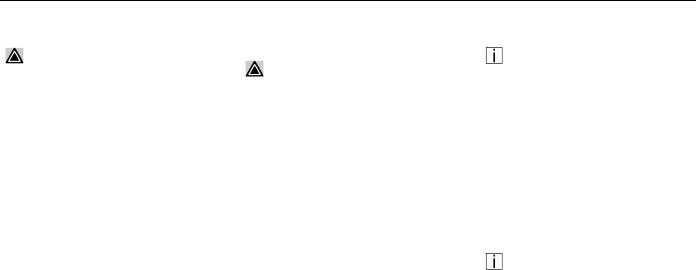
INTRODUCTION
1 |
|
CAUTION |
|
Example: |
|
NOTE |
|
|
CAUTION |
|
|
|
NOTE |
|
|
|
|
|
||
|
|
|
CAUTION |
|||
|
|
|
|
|
|
|
|
|
|
|
Continuing to operate your vehi- |
|
|
|
|
|
|
|
||
|
|
The safety alert following this symbol |
|
cle with insufficient oil pressure will |
|
The alert following this symbol and |
|
|
|
cause serious engine damage. Fail- |
|
||
|
|
and signal word provides a caution |
|
|
signal word provides important |
|
|
|
|
ure to comply may result in equip- |
|
||
|
|
against operating procedures which |
|
|
information that is not safety related |
|
|
|
|
ment or property damage. |
|
||
|
|
could cause equipment or property |
|
|
but should be followed. The alert |
|
|
|
damage. The alert will identify the |
|
|
|
will highlight things that may not be |
|
|
hazard, how to avoid it, and the |
|
|
|
obvious and is useful to your efficient |
|
|
probable consequence of not avoiding |
|
|
|
operation of the vehicle. |
|
|
the hazard. |
|
|
|
Example: |
|
|
|
|
|
|
|
|
|
|
|
|
|
|
|
|
|
|
|
|
NOTE |
|
|
|
|
|
|
|
|
|
|
|
|
|
Pumping the accelerator will not as- |
|
|
|
|
|
|
sist in starting the engine. |
1-4
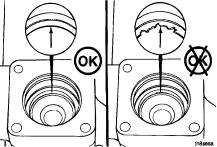
|
|
INTRODUCTION |
||
Illustrations |
|
|
|
|
The illustrations are intended to show |
|
|
1 |
|
General Information |
|
|||
|
repair or replacement procedures. |
|
|
|
|
The procedure will be the same for all |
|
|
|
|
applications, although the illustration |
|
|
|
|
can differ. |
|
|
|
Some of the illustrations throughout this manual are generic and will not look exactly like the engine or parts used in your application. The illustrations can contain symbols to indicate an action required and an acceptable or not acceptable condition.
1-5

INTRODUCTION
1 |
Foreword |
If you find differences between |
This manual contains information for |
your engine and the information |
|
|
in this manual, contact your local |
|
|
the correct operation and maintenance |
PACCAR Authorized Repair Location |
|
of your PACCAR engine. Read and |
or write to PACCAR c/o PACCAR |
|
follow all safety instructions. Refer |
Engines, PO Box 1518, Bellevue, WA |
|
to the WARNING in the “General |
98009. The latest technology and |
|
Safety Instructions” beginning on |
the highest quality components were |
|
page 1-8. Keep this manual with the |
used to produce this engine. When |
|
equipment. If the equipment is traded |
replacement parts are needed, we |
|
or sold, give the manual to the new |
recommend using only genuine parts |
|
owner. The information, specifications, |
from PACCAR. |
|
and recommended maintenance |
|
|
guidelines in this manual are based |
NOTE |
|
on information in effect at the time of |
|
|
Warranty information including the |
|
|
printing. PACCAR reserves the right |
|
|
EPA and California Emission War- |
|
|
to make changes at any time without |
|
|
ranty is located in the section en- |
|
|
obligation. |
|
|
titled “WARRANTY” on page 6-8. |
|
|
|
|
|
|
Make sure you are familiar with the |
|
|
warranty or warranties applicable to |
|
|
your engine. |
1-6

INTRODUCTION
Important Reference |
1 |
|
Numbers |
||
|
Fill in the part name and number in the blank spaces provided below. This will give you a reference whenever service or maintenance is required.
Part Name |
Number |
|
|
Engine Model |
|
(See Engine Identification on page 6-3.) |
|
|
|
Engine Serial Number (ESN) |
|
(See Engine Identification on page 6-3.) |
|
|
|
Oil Type |
|
(See Lubricating Oil Recommendations and Specifications on page 5-26.) |
|
|
|
Filter Part Numbers: |
|
|
|
Air Cleaner Element |
|
|
|
Lubricating Oil |
|
(See Lubricating Oil Recommendations and Specifications on page 5-26.) |
|
|
|
Fuel (Use ultra-low sulfur diesel fuel only) |
|
(See Acceptable Types of Fuels on page 5-22.) |
|
|
|
Coolant |
|
(See Coolant Recommendations and Specifications on page 5-31.) |
|
|
|
Belt Part Numbers: |
|
|
|
1-7

1 |
|
General Safety Instructions |
• Wear protective glasses and |
can cause death, personal injury, |
|
Important Safety Notice |
equipment damage, or damage |
||
|
|
|
protective shoes when working. |
to the fan blade(s), causing |
|
|
WARNING! |
• Rotating parts can cause cuts, |
|
|
|
premature fan failure. |
||
|
|
Improper practices, carelessness, |
mutilation or strangulation. |
• Allow the engine to cool before |
|
|
|
||
|
|
or ignoring any warnings may cause |
• Do not wear loose-fitting or torn |
slowly loosening the coolant filler |
|
|
death, personal injury, equipment or |
clothing. Remove all jewelry when |
cap to relieve the pressure from |
|
|
property damage. |
||
|
|
working. |
the cooling system. |
|
|
|
|
||
|
|
Read and understand all of the |
• Before beginning any repair, |
• Always use blocks or proper |
|
|
safety precautions and warnings |
disconnect the battery (negative |
stands to support the vehicle |
|
|
before performing any repair. This |
[-] cable) and discharge any |
or vehicle components before |
|
|
list contains the general safety |
capacitors. |
performing any service work. |
|
|
precautions that must be followed |
• Disconnect the air starting motor |
Do not work on anything that is |
|
|
to provide personal safety. Special |
supported only by lifting jacks or |
|
|
|
safety precautions are included in the |
if equipped to prevent accidental |
a hoist. |
|
|
procedures when they apply. |
engine starting. |
• Before removing or disconnecting |
|
|
• Put a "DO NOT OPERATE" tag in |
||
|
|
• Work areas should be dry, well lit, |
any lines, fittings, or related items, |
|
|
|
ventilated, free from clutter, loose |
the operator's compartment or on |
relieve all pressure in the air, oil, |
|
|
tools, parts, ignition sources and |
the controls. |
fuel, and cooling systems. Remain |
|
|
hazardous substances. Be aware |
• Use the proper tool for manually |
alert for possible pressure when |
|
|
disconnecting any device from a |
||
|
|
of hazardous conditions that can |
rotating the engine. Do not attempt |
|
|
|
exist. |
to rotate the crankshaft by pulling |
system that contains pressure. |
|
|
INTRODUCTION |
|
High pressure oil or fuel can cause |
|
|
|
|
or prying on the fan. This practice
death or personal injury.
1-8

INTRODUCTION
• Always wear protective clothing |
The lifting hooks must not be |
exhaust gas flow, and hot fluids in |
1 |
side-loaded. |
lines, tubes, and compartments. |
||
when working on any refrigerant |
|
Contact with any hot surface may |
|
|
|
||
lines and make sure that the |
• Corrosion inhibitors and lubricating |
|
|
cause burns. |
|
||
workplace is in a well-ventilated |
|
||
oils may contain alkali. Do not get |
|
|
|
area. Inhalation of fumes can |
• Always use tools that are in good |
|
|
the substance in eyes and avoid |
|
||
cause death or personal injury. |
prolonged or repeated contact |
condition. Make sure you have |
|
To protect the environment, |
|
||
with skin. Do not swallow. In |
the proper understanding of how |
|
|
liquid refrigerant systems must |
|
||
case of contact, immediately wash |
to use the tools before performing |
|
|
be properly emptied and filled |
|
||
skin with soap and water. In case |
any service work. Use ONLY |
|
|
using equipment that prevents |
|
||
of harmful contact, immediately |
genuine replacement parts from |
|
|
the release of refrigerant gas. |
|
||
contact a physician. Always keep |
PACCAR. |
|
|
Federal law requires capturing |
|
||
any chemicals OUT OF REACH |
• Always use the same fastener |
|
|
and recycling refrigerant. |
|
||
• To reduce the possibility of |
OF CHILDREN. |
part number (or equivalent) when |
|
• Naptha and Methyl Ethyl Ketone |
|
||
replacing items. Do not use |
|
||
personal injury, use a hoist |
(MEK) are flammable materials |
a fastener of lesser quality if |
|
or get assistance when lifting |
|
||
and must be used with caution. |
replacements are necessary. |
|
|
components that weigh 23 kg |
|
||
Follow the manufacturer's |
• Do not perform any repair when |
|
|
[50 lb] or more. Ensure all lifting |
|
||
instructions to ensure safety when |
|
||
devices such as chains, hooks, or |
using these materials. Always |
impaired, tired, fatigued or after |
|
slings are in good condition and |
consuming alcohol or drugs that |
|
|
keep any chemicals OUT OF |
|
||
are of the correct load capacity. |
can impair your functioning. |
|
|
REACH OF CHILDREN. |
|
||
Make sure any lifting devices are |
• Some state and federal agencies |
|
|
• When working on the vehicle, |
|
||
positioned correctly. Always use |
|
||
a spreader bar when necessary. |
be alert for hot parts on systems |
in the United States of America |
|
that have just been turned off, |
have determined that used engine |
|
1-9
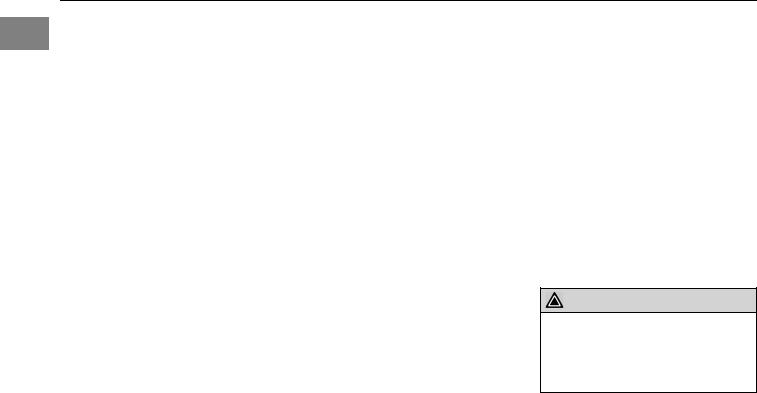
INTRODUCTION
1 |
oil can be carcinogenic and can |
cause reproductive toxicity. Avoid |
inhalation of vapors, ingestion, and prolonged contact with used engine oil.
•Liquefied petroleum gas is heavier than air and can accumulate near the floor, in sumps, and low-lying areas.
•Natural gas is lighter than air and can accumulate under hood and awnings.
•To reduce the possibility of suffocation and frostbite, wear protective clothing and ONLY disconnect natural gas and liquefied petroleum gas lines in a well-ventilated area.
•Close the manual fuel valves prior to performing maintenance and repairs, and when storing the vehicle inside.
•Coolant is toxic. If not reused, dispose of coolant in accordance with local environmental regulations.
•The Diesel Exhaust Fluid contains urea. Do not get the substance in your eyes. In case of contact, immediately flood eyes with large amounts of water for a minimum of 15 minutes. Avoid prolonged contact with skin. In case of contact, immediately wash skin with soap and water. Do not swallow internally. In the event the Diesel Exhaust Fluid is ingested, contact a physician immediately.
•California Proposition 65 Warning - Diesel engine exhaust and some of its constituents are known to the State of California to cause cancer, birth defects, and other reproductive harm.
•The catalyst substrate located in the Diesel Particulate Filter
contains Vanadium Pentoxide. Vanadium Pentoxide has been determined by the State of California to cause cancer. Always wear protective clothing and eye protection when handling the catalyst assembly. Dispose of the catalyst in accordance with local regulations. If catalyst material gets into the eyes, immediately flood eyes with water for a minimum of 15 minutes. Avoid prolonged contact with skin. In case of contact, immediately wash skin with soap and water. In case of harmful contact, immediately contact a physician.
CAUTION
Corrosive chemicals can damage the engine. Do not use corrosive chemicals on the engine. Failure to comply may result in equipment or property damage.
1-10

INTRODUCTION
Acronyms and |
°F |
Fahrenheit |
RGT |
Rear Gear Train |
1 |
|
Abbreviations |
FMI |
Failure Mode Indentifier |
rpm |
Revolutions Per Minute |
||
ft-lb |
Foot-Pound Force |
SAE |
Society of Automotive Engineers |
|
||
|
||||||
General Information |
GVW |
Gross Vehicle Weight |
SCA |
Supplemental Coolant Additive |
|
|
HEST |
High Exhaust System Temperature |
SCR |
Selective Catalytic Reduction |
|
||
The following list contains some of the |
LPG |
Liquified Petroleum Gas |
SID |
Subsystem Identification |
|
|
Hg |
Mercury |
Descriptions |
|
|||
|
|
|||||
acronyms and abbreviations used in |
hp |
Horsepower |
STC |
Step Timing Control |
|
|
this manual. |
H2O |
Water |
VDC |
Volts of Direct Current |
|
|
|
|
ICM |
Ignition Control Module |
VGT |
Variable Geometry Turbocharger |
|
API |
American Petroleum Institute |
inHg |
Inches of Mercury |
VS |
Variable Speed |
|
ASTM |
American Society of Testing and |
in H2O |
Inches of Water |
VSS |
Vehicle Speed Sensor |
|
Materials |
km/l |
Kilometers per Liter |
|
|
|
|
ATS |
After-Treatment System |
kPa |
Kilopascal |
|
|
|
BTU |
British Thermal Unit |
LTA |
Low Temperature Aftercooling |
|
|
|
°C |
Celsius |
MPa |
Megapascal |
|
|
|
CARB |
California Air Resources Board |
mph |
Miles Per Hour |
|
|
|
CCA |
Cold Cranking Amperes |
mpq |
Miles Per Quart |
|
|
|
C.I.D. |
Cubic Inch Displacement |
N•m |
Newton-meter |
|
|
|
CPL |
Control Parts List |
NG |
Natural Gas |
|
|
|
cSt |
Centistokes |
NOx |
Mono-Nitrogen Oxides |
|
|
|
DEF |
Diesel Exhaust Fluid |
O2 |
Oxygen |
|
|
|
DOC |
Diesel Oxidation Catalyst |
OBD |
On-Board Diagnostics |
|
|
|
DPF |
Diesel Particulate Filter |
OEM |
Original Equipment Manufacturer |
|
|
|
ECM |
Electronic Control Module |
PID |
Parameter Identification |
|
|
|
EGR |
Exhaust Gas Recirculation |
Descriptions |
|
|
|
|
ppm |
|
|
|
|||
ELC |
Extended Life Coolant |
Parts Per Million |
|
|
|
|
EMI |
Electromagnetic Interference |
psi |
Pounds Per Square Inch |
|
|
|
EPA |
Environmental Protection Agency |
PTO |
Power Takeoff |
|
|
|
ESN |
Engine Serial Number |
REPTO |
Rear Power Take Off |
|
|
|
1-11

INTRODUCTION
1 |
Unique Operating |
An OBD system operates in a manner |
multiple consecutive trips before the |
|
Characteristics of an Engine |
MIL is illuminated. A trip is a condition |
|||
|
very similar to the traditional PACCAR |
or operating state the engine must |
||
|
with On-Board Diagnostic |
diagnostic system. Both systems |
||
|
operate for the OBD fault code to |
|||
|
General Information |
store fault codes, induce derates when |
||
|
gather information and determine if a |
|||
|
|
required to protect the engine and |
||
|
The engines supported by this |
malfunction has occurred. The MIL |
||
|
aftertreatment from further damage, |
|||
|
turns on when an OBD fault code is |
|||
|
manual are required to meet Heavy |
|||
|
and illuminate dashboard lamps. |
|||
|
logged, and in most cases, it requires |
|||
|
Duty On-Board Diagnostics (OBD) |
|||
|
These fault codes are used by the |
|||
|
three trips without a malfunction |
|||
|
regulations. EPA HD OBD is required |
|||
|
service channel for troubleshooting |
|||
|
occurrence to clear the lamp. |
|||
|
for all U.S. vehicles with a gross |
|||
|
and repair. |
|||
|
|
|||
|
vehicle weight over 6350 kg [14,000 |
|
||
|
|
|
For more information on the MIL and |
|
|
lb]. |
The differences between an OBD |
||
|
what the operator should do when |
|||
|
|
system and the traditional PACCAR |
||
|
OBD exists to make sure the engine |
the MIL illuminates, see Malfunction |
||
|
diagnostic system are that an OBD |
|||
|
Indicator Lamp on page 3-4. |
|||
|
is operating within emissions limits. |
|||
|
system: |
|||
|
|
|||
|
OBD continuously monitors the engine |
|
||
|
• |
|
|
|
|
and aftertreatment system to detect |
illuminates the MIL |
|
|
|
malfunctions that adversely affect |
• |
detects deteriorated components |
|
|
emissions. Once a malfunction is |
|
||
|
detected, a malfunction indicator lamp |
|
and systems (not just total |
|
|
(MIL) illuminates to inform the driver |
|
malfunctions) |
|
|
of the malfunction and a fault code, |
• performs multiple trip diagnostics |
|
|
|
which identifies the likely malfunction, |
|
||
|
is stored in the engine control module |
Multiple trip diagnostics are |
|
|
|
(ECM). |
malfunctions that must occur in |
|
|
1-12
|
|
EMERGENCY |
||
WHAT TO DO IF... |
|
|
|
|
You Need Roadside Assistance. . . . . . . . . . |
2-3 |
|
|
|
Stop Engine Lamp Turns On . . . . . . . . . . . |
2-3 |
|
2 |
|
Engine Oil Pressure Lamp Turns On. . . . . . . . |
2-4 |
|
|
|
|
|
|
||
Check Engine Lamp Turns On . . . . . . . . . . |
2-5 |
|
|
|
Engine is Overheating . . . . . . . . . . . . . . |
2-5 |
|
|
|
2-1
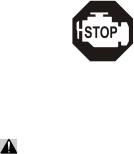
|
|
WHAT TO DO IF... |
|
||
WHAT TO DO IF... |
• They can assist with jump and |
Stop Engine Lamp Turns On |
|||
You Need Roadside |
pull starts, tires, trailers, fines and |
|
|
|
|
permits, chains, towing, hazardous |
|
|
|
||
Assistance |
clean-up, out of fuel (roadside), |
|
|
|
|
|
|
2 |
|||
|
mechanical repairs and preventive |
|
|||
Call toll-FREE to talk to someone at |
maintenance services. |
|
|
|
|
|
|
|
|||
the PACCAR Customer Center. The |
• They have multilingual agents and |
If the Stop Engine warning lamp |
|||
toll-FREE telephone number is located |
|||||
on the windshield decal. |
access to a translation service |
illuminates, it means you have a |
|||
to ensure quality assistance |
serious engine system problem. |
||||
• Open 24-7-365 days a year |
|||||
for customers who speak any |
|
|
|
||
• They can help you get roadside |
language. |
WARNING! |
|
|
|
• They can’t answer your warranty |
This should be considered an emer- |
|
|
||
assistance. |
|
|
|||
• They have a custom mapping |
questions but can get you in |
gency. You should stop the vehicle |
|
|
|
as safely as possible and turn "OFF" |
|
|
|||
contact with an authorized dealer |
|
|
|||
system which locates authorized |
who can. |
the ignition. The vehicle must be |
|
|
|
PACCAR engine dealers and |
serviced and the problem corrected |
|
|
||
• The PACCAR Customer Center |
|
|
|||
Independent Service Providers |
beforedrivingagain. Failuretodoso |
|
|
||
(ISPs) near you and lists types |
service is FREE. |
may result in personal injury, severe |
|
|
|
of services offered, hours of |
|
engine damage, equipment or prop- |
|
|
|
operation and contact information. |
|
erty damage. |
|
|
|
2-3

WHAT TO DO IF...
|
|
Engine Oil Pressure Lamp |
• |
See Lubricating Oil System on |
5. Turn "ON" the emergency flasher |
|
|
Turns On |
|||
|
|
|
page 5-15, for the correct oil |
and use other warning devices to |
|
|
|
|
|
pressure ranges for your vehicle's |
alert other motorists. |
|
|
|
|
engine. |
6. Wait a few minutes to allow oil |
2 |
|
|
|
||
|
|
|
|
||
|
|
• |
If the oil pressure suddenly drops, |
to drain into the engine oil pan, |
|
|
|
|
|
or the audible alarm and engine |
and then check the oil level. (See |
|
|
It is important to maintain oil pressure |
|
oil pressure warning light come on |
Inspection of the Engine Oil Level |
|
|
|
while driving, do the following: |
on page 5-3.) |
|
|
|
within acceptable limits. If oil pressure |
|
||
|
|
|
|
7. Add oil if necessary. If the problem |
|
|
|
drops below the minimum psi a Red |
1. |
Slow down carefully. |
|
|
|
Warning Lamp on the oil pressure |
2. |
Move a safe distance off the road |
persists, contact an authorized |
|
|
gauge and the Stop Engine Lamp will |
PACCAR engine dealer as soon |
||
|
|
come ON. |
|
and stop. |
as possible. |
|
|
|
3. |
Place the transmission in |
|
|
|
CAUTION |
|
||
|
|
|
neutral and set the parking |
|
|
|
|
Continuing to operate your vehi- |
|
brake. (See Parking Brake |
|
|
|
cle with insufficient oil pressure |
|
Valve and OPERATING THE |
|
|
|
may cause severe engine damage, |
|
TRANSMISSION in your |
|
|
|
equipment or property damage. |
|
vehicle Operator's Manual, |
|
|
|
|
|
for transmission shifting and |
|
|
|
• If the oil pressure fails to rise within |
|
|
|
|
|
|
parking brake information.) |
|
|
|
|
10 seconds after the engine starts, |
4. |
Turn "OFF" the engine. |
|
|
|
|
|
stop the engine and determine the cause.
2-4
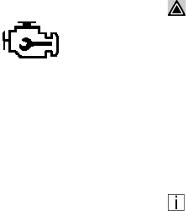
|
|
|
WHAT TO DO IF... |
|
|
Check Engine Lamp Turns |
Engine is Overheating |
If the engine coolant temperature |
|
|
|
On |
|
|
|
||
CAUTION |
|
||||
|
warning lamp comes on and the |
|
|||
|
|
|
audible alarm sounds showing an |
|
|
|
The cooling system may overheat if |
|
|||
|
overheat condition, or if you have any |
2 |
|||
|
theenginecoolantisattheminimum |
||||
|
other reason to suspect the engine |
||||
|
level. A sudden loss of coolant, |
may be overheating, DO NOT TURN |
|
||
|
|
||||
|
caused by a split hose or broken |
|
|||
|
OFF THE ENGINE unless a low water |
|
|||
The Check Engine Lamp turns on |
hose clamp could also lead to an |
|
|||
warning device indicates a loss of |
|
||||
when a problem exists, but the vehicle |
overheat condition. Always inspect |
|
|||
coolant. Follow these steps: |
|
||||
can still be safely driven. Vehicle |
to ensure hoses and clamps are not |
|
|||
|
|
|
|||
should be serviced to correct the |
cracked, worn, or loose. Failure to |
1. Reduce engine speed or stop. |
|
||
problem but the situation should not be |
comply may result in equipment or |
When stopped, place the |
|
||
considered an emergency. |
property damage. |
|
transmission in neutral and set the |
|
|
|
|
|
parking brake. See the vehicle |
|
|
|
NOTE |
operator's manual for instructions |
|
||
|
on transmission shifting and |
|
|||
|
|
|
|
||
|
The system may |
also temporarily |
|
||
|
parking brake information. |
|
|||
|
overheat during |
severe operating |
|
||
|
2. Check to ensure that the oil |
|
|||
|
conditions such as: |
|
|||
|
• Climbing a hill on a hot day. |
pressure gauge reads normal. |
|
||
|
3. Increase the engine speed to |
|
|||
|
• Stopping after high-speed/high- |
|
|||
|
about one-half of full operating |
|
|||
|
load driving. |
|
|
||
|
|
speed, or 1,100 to 1,200 rpm, |
|
||
|
• Debris blocking air flow through |
maximum for 2-3 minutes. |
|
||
|
the cooling module (radiator). |
|
|
|
|
2-5
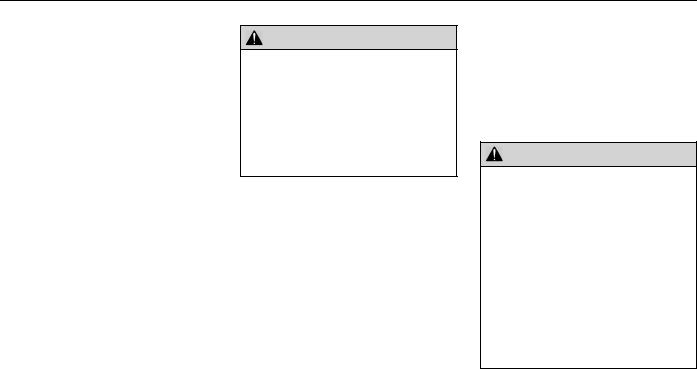
WHAT TO DO IF...
4.Return the engine speed to normal idle after two or three minutes.
5.Monitor the engine temperature.
2 |
After the temperature returns to |
normal, allow the engine to idle |
|
|
3-5 minutes before shutting it off. |
|
This allows the engine to cool |
|
gradually and uniformly. |
6.If the overheating came from severe operating conditions, the temperature should have cooled by this time.
7.Check the sight gauge (glass level indicator) on the side of the coolant expansion tank.
WARNING!
Removing the surge tank fill cap while the engine is hot can be dangerous. Never remove the surge tank cap while the engine is still hot; you could be badly burned. Failure to comply may result in death, personal injury, equipment or property damage.
Removing the surge tank fill cap while the engine is too hot is dangerous. Scalding steam and fluid under pressure may escape and cause serious personal injuries. When removing the surge tank fill cap, follow these steps:
1.Wait until the coolant temperature is below 122°F [50°C].
2.Protect your face, hands, and arms by covering the cap with a large, thick rag to protect against escaping fluid and steam.
3.Carefully and slowly turn the cap one turn to allow excess pressure to escape, then push down and turn for final removal. See the vehicle operator's manual for instructions on checking and filling the cooling module surge tank.
WARNING!
To reduce the chance of personal injury and/or vehicle damage caused by engine overheating, never leave the engine idling when the vehicle is unattended. Iftheengineoverheats, immediate action is required to correct the condition. Continued unattendedoperationoftheengine,even for a short time, may result in serious engine damage or a fire. Failure to comply may result in death, personal injury, equipment or property damage.
2-6
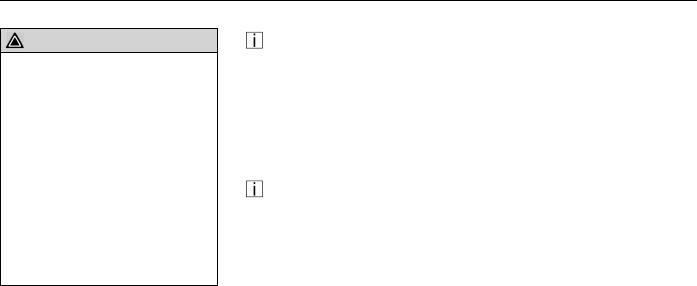
WHAT TO DO IF...
CAUTION
Do not allow your engine to idle, at low rpm's (400-600 rpm), longer than five minutes. Long periods of idling after the engine has reached operating temperatures can decrease engine temperature and cause gummed piston rings, clogged injectors, and possible engine damage from lack of lubrication. The normal torsional vibrations generated by the engine can also cause transmission wear. If an engine must idle for an extended period of time, it should be done at fast idle (1,000 rpm or greater).
NOTE |
|
|
|
|
|
An idle shutdown feature, available |
|
|
on PACCAR Engines, can be pro- |
|
|
|
2 |
|
grammed to shut the engine down |
|
|
after a period of low idle speed op- |
|
|
|
|
|
eration with no driver activity. A |
|
|
flashing warning lamp will inform the |
|
|
driver of an impending shutdown. |
|
|
|
|
|
NOTE |
|
|
|
|
|
The power take off (PTO) feature, |
|
|
available on PACCAR engines, can |
|
|
beprogrammedtoadjustengineidle |
|
|
speed with the use of switches to |
|
|
pre-programmed set points. |
|
|
2-7


CONTROLS
OPERATING INSTRUCTIONS
Engine Warning Lamps . . . . . . . . . . . . . 3-3
Engine Operating Range. . . . . . . . . . . . . 3-7
Engine Braking System . . . . . . . . . . . . . 3-8
3
3-1

OPERATING INSTRUCTIONS
OPERATING INSTRUCTIONS
Engine Warning Lamps
Wait-to-Start Lamp |
Check Engine Lamp |
General Information
The following engine indicator lamps cover only the lamps controlled
by the engine's ECM. The vehicle manufacturer can provide additional indicator lamps. Please refer to the vehicle's operator's manual for additional lamp information.
The WAIT TO START lamp illuminates when the intake air heater (grid heater) needs to warm the intake air prior to starting the engine.
The WAIT TO START lamp can look like:
•The words WAIT TO START spelled out
•A symbol similar to the graphic illustrated
•The color of the symbol or words can vary, based on the manufacturer of the vehicle, but will typically be red or amber.
The CHECK ENGINE lamp illuminates when the engine needs service at the 3 first available opportunity.
The CHECK ENGINE lamp is amber, and can look like:
•The words WARNING or CHECK ENGINE spelled out.
•A symbol of an engine, similar to the graphic illustrated.
The CHECK ENGINE lamp is located on the face of the tachometer and illuminates when a problem exists, but the vehicle can still be safely driven. Vehicle should be serviced to correct the problem, but the situation should not be considered an emergency. The
3-3

OPERATING INSTRUCTIONS
Check Engine lamp will activate for several reasons. These include but are not limited to Water in Fuel and Diesel Particulate Filter (DPF) generation required.
Another function of the CHECK ENGINE lamp is to flash for 30 seconds at key ON when one of the
3 following occurs. This flashing function is referred to as the MAINTENANCE lamp. The MAINTENANCE lamp could flash for any of the following reasons:
•Maintenance required (if the Maintenance Monitor is enabled)
•Water-in-fuel is detected
•Coolant level is low.
Malfunction Indicator Lamp
Illuminates when an engine emissions failure has occurred. The vehicle can be safely driven but should be serviced to correct the problem. The situation should not be considered an emergency. In some cases, the Malfunction Indicator Lamp will activate in conjunction with the High Exhaust Temperature, Diesel Particulate Filter (DPF) and Diesel Exhaust Fluid (DEF) Warning Lights.
Stop Engine Lamp
The STOP ENGINE lamp indicates, when illuminated, the need to stop the engine as soon as it can be safely done. The engine must remain shut down until the engine can be repaired.
For engines with the Engine Protection Shutdown feature enabled, if the STOP ENGINE lamp begins to flash, the engine will automatically shut down after 30 seconds. The flashing STOP engine lamp alerts the operator to the impending shutdown.
3-4

OPERATING INSTRUCTIONS
High Exhaust System Temperature
(HEST) Warning Lamp
HEST Warning Lamp
Refer to Engine Aftertreatment Systems Operator's Manual for additional information.
Diesel Particulate Filter (DPF)
Warning Lamp
A flashing AFTERTREATMENT DIESEL PARTICULATE FILTER lamp indicates that the aftertreatment diesel particulate filter needs to be regenerated at the next possible opportunity. Engine power may be reduced automatically. When this lamp is flashing, the operator should:
1.Change to a more challenging duty cycle, such as highway driving, for at least 20 minutes.
2.Performing a stationary regeneration.
A flashing AFTERTREATMENT DIESEL PARTICULATE FILTER lamp combined with an illuminated WARNING or CHECK ENGINE lamp indicates that the aftertreatment diesel particulate filter needs be regenerated immediately. Engine power will be
reduced automatically.
3
When these lamps are illuminated, a stationary regeneration is required.
NOTE
If a stationary regeneration is not performed, the STOP ENGINE lamp will illuminate and the vehicle will needtobetakentoanauthorizedrepair location.
Refer to Engine Aftertreatment Systems Operator's Manual for additional information.
3-5
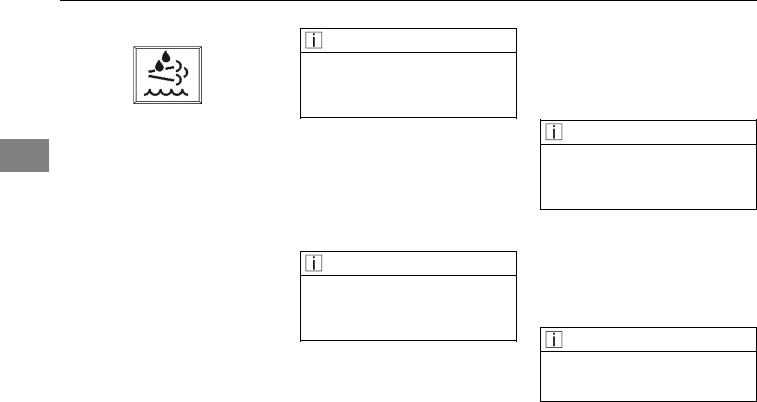
OPERATING INSTRUCTIONS
Diesel Exhaust Fluid (DEF) Lamp
Diesel Exhaust Fluid (DEF) Lamp
3 The AFTERTREATMENT DIESEL EXHAUST FLUID lamp indicates, when illuminated or flashing, that the diesel exhaust fluid level is low.
An illuminated AFTERTREATMENT DIESEL EXHAUST FLUID lamp indicates that the diesel exhaust fluid level has fallen below the initial warning level. This can be corrected by filling the diesel exhaust fluid tank with diesel exhaust fluid.
NOTE
Itisrecommendedthatthedieselexhaust fluid tank be filled completely full of diesel exhaust fluid in order to correct any fault conditions.
A flashing AFTERTREATMENT DIESEL EXHAUST FLUID lamp indicates that the diesel exhaust fluid level has fallen below the critical warning level. This can be corrected by filling the diesel exhaust fluid tank with diesel exhaust fluid.
NOTE
Itisrecommendedthatthedieselexhaust fluid tank be filled completely full of diesel exhaust fluid in order to correct any fault conditions.
A flashing AFTERTREATMENT DIESEL EXHAUST FLUID lamp combined with an illuminated WARNING or CHECK ENGINE lamp
indicates that the diesel exhaust fluid level has fallen below the initial derate level. The engine power will be limited automatically. This can be corrected by filling the diesel exhaust fluid tank with diesel exhaust fluid.
NOTE
Itisrecommendedthatthedieselexhaust fluid tank be filled completely full of diesel exhaust fluid in order to correct any fault conditions.
Allowing the diesel exhaust fluid tank to become empty will cause the aftertreatment diesel exhaust fluid dosing system to lose prime. A loss of prime condition may cause fault codes to become active.
NOTE
On OBD certified products, the MIL may become illuminated for a loss of prime condition.
3-6
